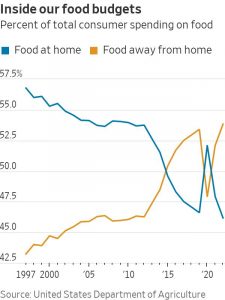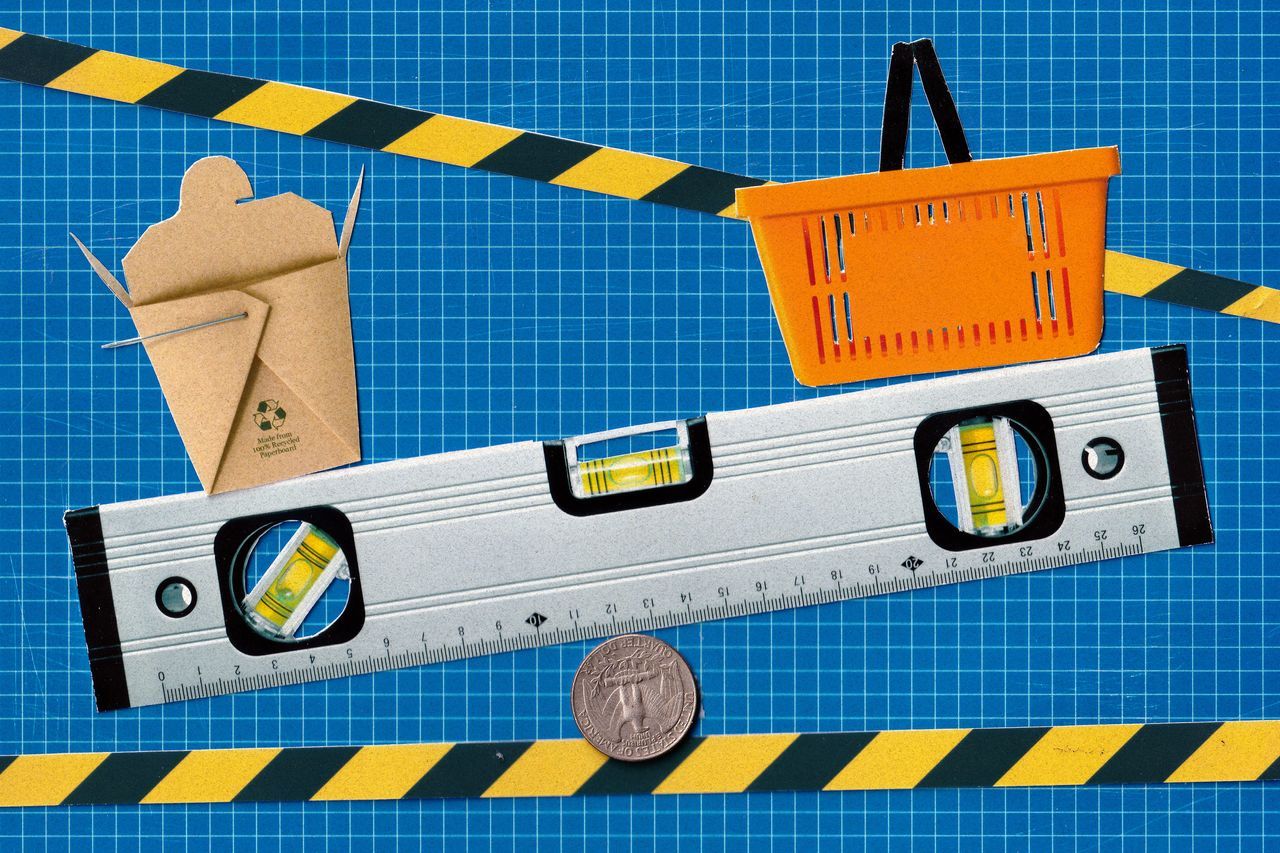WSJ’s Personal Finance team presents a series on how to fix your financial life in 2024. Last in our series: tackling the tricky subject of food budgets.
If you’re wondering where your food spending is going each month, look in your trash can.
After putting a roof over our heads and getting around town, food is the biggest expense in our monthly budgets. Rising food costs topped the list of consumers’ financial concerns this year after a period of rapid inflation. It is also one of the hardest categories of spending to rein in, as cutting food costs can mean changing how much, and what, we eat.
With food prices still rising, most people can meaningfully reduce their food spending without clipping coupons or incorporating more instant ramen into their diets. The easiest way to cut back on how much you spend on meals is to reduce the amount of food you waste, financial advisers and dietitians say.

About 20% of food purchased last year ended up in the garbage, according to a Wall Street Journal analysis of data from BLS and ReFED, a nonprofit dedicated to reducing food waste. Americans threw out $252 billion worth of food last year, according to ReFED. That works out to nearly $1,900 per household, or about $150 a month.
“Everyone has that aspirational, rotting bag of spinach in their fridge, and that is something you don’t need to be buying,” said Tori Martinet, a California based-dietitian and former food-service executive.
The most common mistake she sees among new clients is grocery shopping for a version of themselves that doesn’t exist—especially at the beginning of the year, when people are looking for a fresh start and eager to hit health goals.
“Just being honest with yourself about where your food spend is going to go can shift a lot of the stress and the actual dollar amount of spending to things that you’re actually going to consume,” said Martinet.
Here’s how to fix your food budget in 2024, according to dietitians and financial advisers.
Plan accordingly
The most effective way to lower your food spending is to go to, or order from, the grocery store less frequently, said Theresa Bailey, a Florida-based financial counselor. Going less frequently means you have to plan out each trip carefully.
“We don’t meal plan properly, and that is what costs us so much money,” she said.
Dietitians and financial advisers suggest taking inventory of your pantry, refrigerator and freezer weekly, or at least before heading to the grocery store. One of the first things Almetria Turner, a wellness coach and doula based in Memphis, Tenn., does with new clients is go through what they already have.
Often she finds several open bottles of ketchup in the pantry and two-year old ground beef in the freezer that clients forgot about. “That money is wasted,” she said.
You can avoid this kind of waste by not buying items that you don’t have a plan to eat within a set period, even if it is on sale. People who buy groceries based on weekly plans tend to waste less than people who buy groceries monthly.
Opting to keep your list on a physical piece of paper instead of a digital format makes shoppers more likely to stick to their list and avoid impulse purchases, according to research by Yanliu Huang, an associate professor of marketing at Drexel University. People tend to put more thought into paper lists because it feels more final than digital lists that they can edit on the fly.
Meal planning can be time consuming at the outset. Bailey has found ways to get that time back throughout the week. She writes down what she plans to cook and eat for the week using a spreadsheet that she shares with her family to avoid perennial questions about what’s for dinner.
“They are old enough to go look,” she said. “That is my time savings.”
It is the produce
Fruits and vegetables are the most commonly wasted foods, according to a study by Mitre, a U.S. nonprofit that oversees federally funded research projects.
You can maximize the freshness of produce by storing them correctly. Many veggies have their own hacks. Take asparagus, which lasts longest when stored in a glass with water. There are online tools like the USDA’s Food Keeper app and SaveTheFood.com’s interactive storage guide that can help you figure out the best way to store your groceries without memorizing too many tricks.
Families with children waste more vegetables than the average household. Parents should serve themselves smaller portions and expect to take some greens off their child’s plate to reduce waste, the study said.
…and restaurants
Preparing all of your meals at home is usually the cheapest way to feed yourself, but that option has proved challenging as Americans spend more time at work.
More than half of the money that Americans spend on food has gone toward food prepared outside the home since 2015, according to USDA data. (The exception was 2020, when eating out was less of an option.)
Last year, food-away-from-home spending, which includes prepared food ordered from restaurants and picked up from grocery stores, accounted for about 54% of overall food spending, the largest share since the agency started tracking in 1960.
Be realistic

Many people fail at meal planning because they create frameworks that are too rigid and ambitious, Bailey said. Instead of trying to eliminate food delivery entirely, give yourself a rolling budget. She also suggests building in “lazy meals” like leftovers or breakfast for dinner, which can lower your costs while giving yourself a break.
Researchers recommend setting up “if/then” conditions to give yourself wiggle room and avoid discouraging feelings of failure. For example: “If I don’t use the spinach by Friday, then I will put it in the freezer.”
When trying to make lifestyle changes, most people would be better off building a food budget that accommodates their existing food habits and making smaller adjustments over time, dietitians say. Trying to quit the convenience of prepared food and takeout cold-turkey in an attempt to save money often leads to more spending.
When Turner first started her weight-loss journey in 2010, the first thing she did was stock her refrigerator with healthy foods to support her new lifestyle. Within a few weeks, she found herself eating out after a long day’s work and her groceries went to waste.
After that, she opted for more realistic, gradual changes. She eventually launched a fitness blog and dubbed herself the Healthy Budgetnista after she lost 177 pounds.
“Don’t dive in headfirst. Give yourself grace,” she said.



